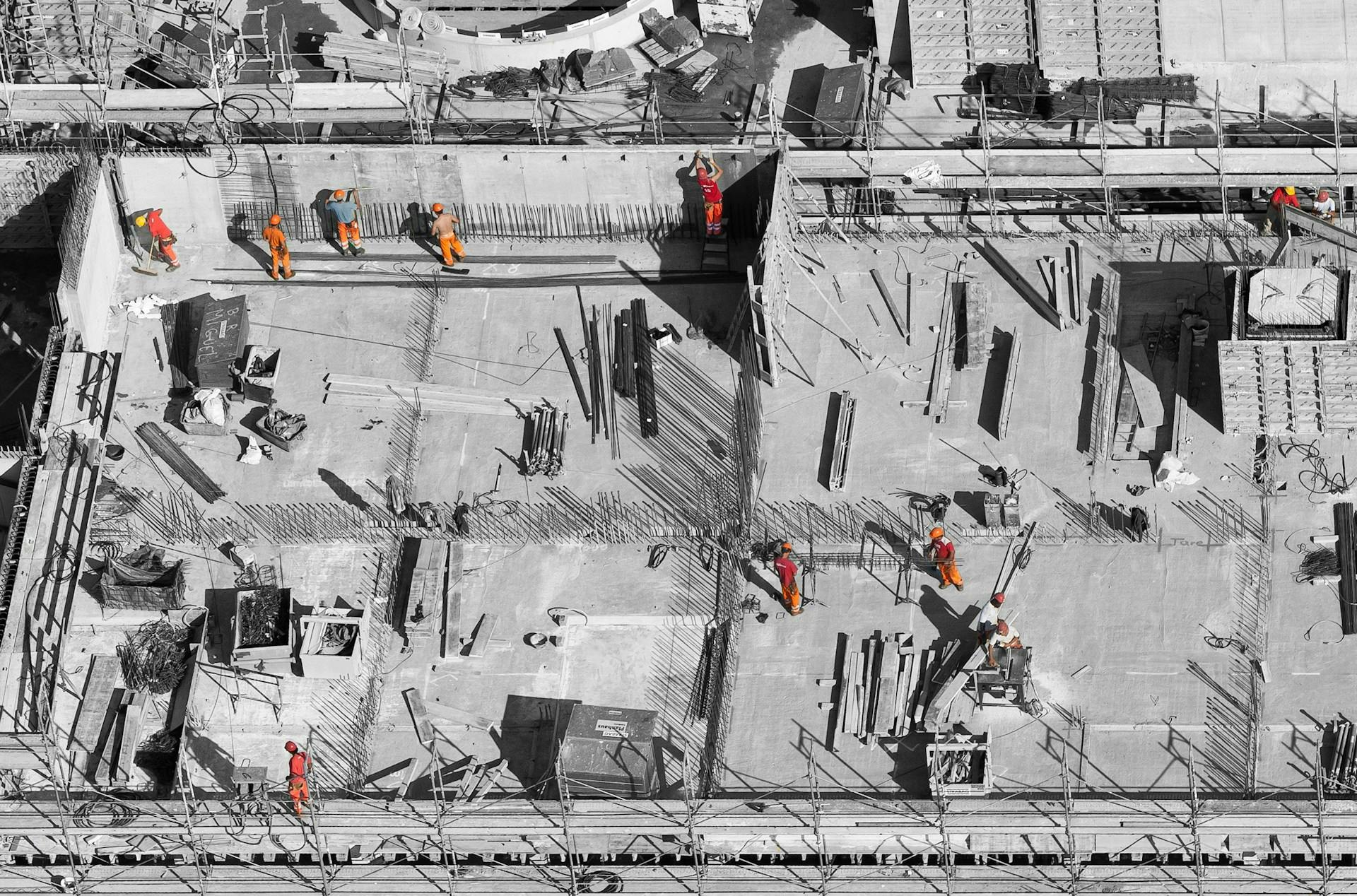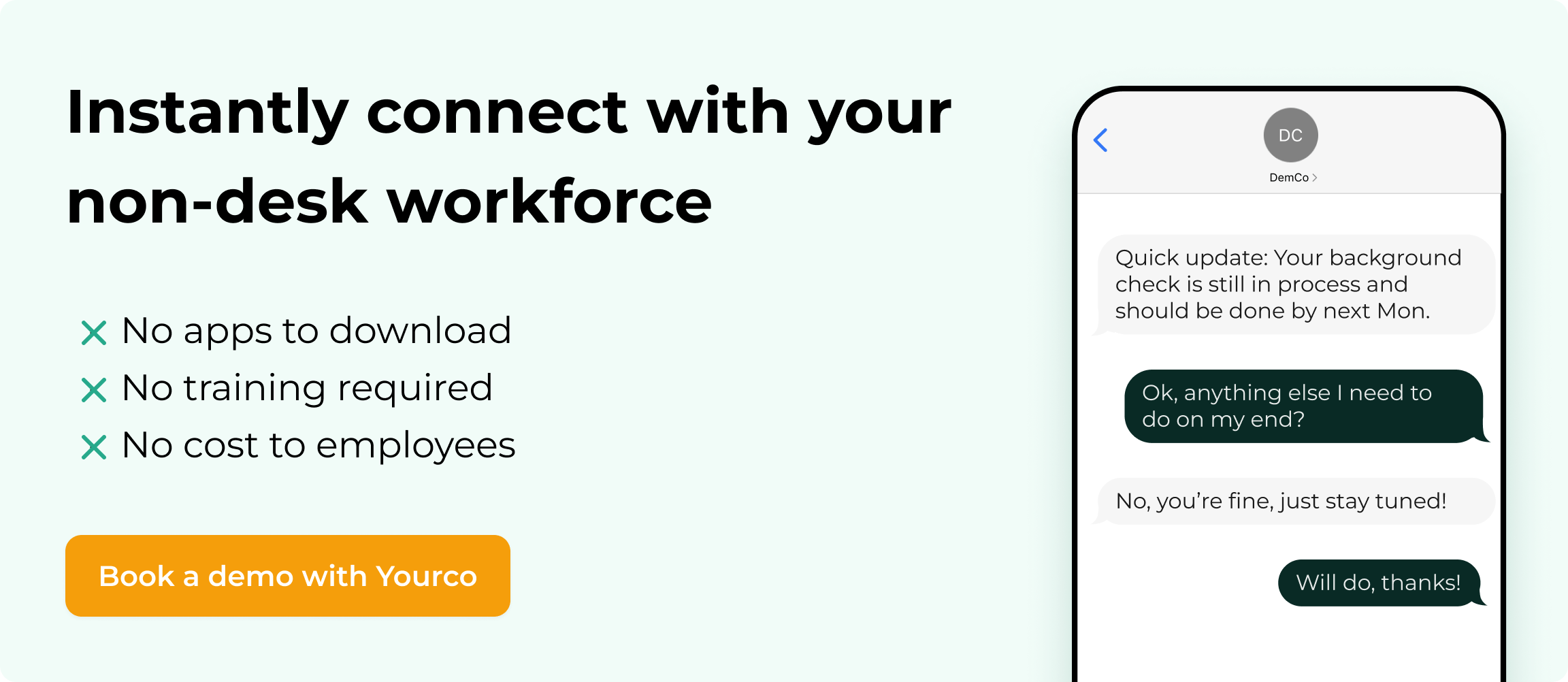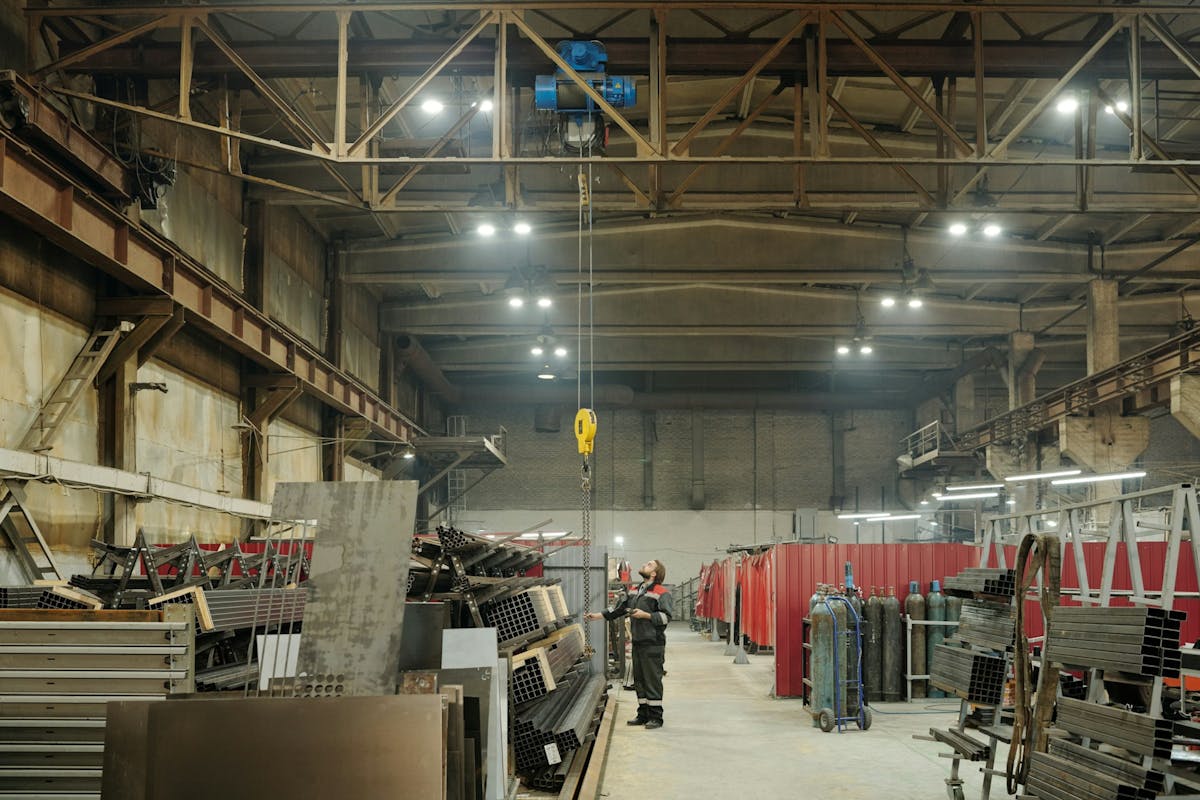Mastering Communication in Construction: Essential Strategies for Success


In construction, communication is the glue that holds every project together. With all the moving parts: architects, engineers, contractors, subcontractors, suppliers, and inspectors, all working across different locations, there is often intense pressure to deliver complex builds on time and under budget.
The challenge? Most construction workers are what we call ‘non-desk employees’, who are part of the 80% of the global workforce that don't have daily access to computers, company emails, or corporate intranets. They're on job sites, not in front of screens. Yet they need up-to-the-minute information just as urgently as any project manager or engineer.
When communication breaks down in these environments, the consequences are immediate and costly. Misunderstandings cause delays, errors lead to rework, and critical safety information might not reach the people who need it most. In fact, industry research shows that miscommunication and poor data management waste up to $31 billion in construction project costs annually.
Good communication does more than keep teams aligned. It boosts efficiency, enhances safety, prevents costly mistakes, and ensures projects stay on track. As construction increasingly adopts new technologies, the real challenge is connecting old-school fieldwork realities with modern, mobile-first communication solutions that work for every worker, whether they're on a scaffold, behind a crane, or managing operations from headquarters.
By taking communication seriously and building systems that reach the entire workforce, not just the office staff, construction companies can finish projects faster, create safer worksites, and deliver better outcomes for clients.
Common Challenges in Construction Communication
Effective communication in construction remains one of the most challenging aspects for project managers and site supervisors to master. Let's explore the most common communication barriers in the construction industry and their impacts on project outcomes.
Fragmented Project Teams
One of the most significant challenges is the fragmented nature of construction teams. Projects involve multiple stakeholders, each with specific roles and communication methods. This fragmentation creates an environment where necessary information may not flow effectively, resulting in misalignments that can delay projects and increase costs.
Industry Jargon and Technical Language
The construction industry relies heavily on specialized terminology that can create barriers to clear communication. Terms well-understood by specialists can confuse others unfamiliar with the jargon. When project managers fail to minimize technical language, they risk creating an environment where not everyone understands project requirements, potentially leading to serious errors and rework.
Language and Cultural Barriers
With increasingly diverse workforces, construction sites often bring together teams from various cultural and linguistic backgrounds. Language differences can be particularly problematic in high-risk environments where clear communication about safety procedures is essential. Employing methods for overcoming language barriers can significantly improve both productivity and safety.
Unclear Instructions and Communication Channels
Construction teams often work across different job sites with frequent changes to plans and priorities. Without clear instructions and established communication channels, workers can quickly become confused about their tasks and responsibilities, especially given the changing nature of construction projects.
Lack of Real-Time Updates
The nature of construction projects requires timely updates about changes, delays, and emerging issues. However, with workers spread across different locations, often without immediate access to digital tools, real-time updates can be difficult to achieve, leading to wasted resources and potential safety risks.
Geographically Dispersed Work Environments
Construction businesses operate in widely dispersed environments, with workers spread between multiple construction sites and offices. This physical separation creates natural barriers to effective communication, making it harder to ensure everyone has the same understanding of project goals, timelines, and quality standards. Improving multi-locational efficiency through effective communication strategies is essential.
Information Asymmetry Among Workers
Due to the field work environment and communication challenges, workers may not all have access to the same information. This information asymmetry can lead to significant project issues, including mistakes, safety risks, and inefficient resource utilization.
Inadequate Feedback Mechanisms
When there is no clearly designated method for employees to voice concerns or provide feedback, workers are less likely to speak up about potential problems. Without effective feedback channels, valuable insights from frontline workers may never reach project managers, leading to repeated mistakes and missed opportunities for improvement.
Documentation and Record-Keeping Challenges
Construction projects generate vast amounts of documentation. Managing this information and ensuring it's accessible to the right people at the right time presents a significant communication challenge. Poor documentation practices can lead to confusion about project requirements, resulting in costly delays, rework, and even legal disputes.
These communication challenges collectively impact project efficiency, safety, and overall success. Addressing them requires a multi-faceted approach that combines clear protocols, appropriate technology, and a culture that values open communication at all levels.
Strategies for Improving Communication in Construction
Addressing communication challenges in construction requires a comprehensive approach. Through implementing the following strategies, construction companies can significantly enhance communication in construction projects.
Establishing Clear Communication Protocols
Setting clear communication channels, including predefined methods and regular updates, improves project management. A well-defined communication hierarchy that follows contractual guidelines ensures information flows smoothly between all stakeholders. For instance, communication between owners and contractors should typically flow through architects, while general contractors relay information to suppliers and subcontractors.
Implementing systematic meeting schedules creates accountability and alignment:
- Daily briefings for immediate concerns
- Weekly updates to track progress
- Monthly reports for broader strategy discussions
This structured approach helps prevent misunderstandings and ensures all team members stay informed about project developments. Documenting communication processes also enhances accountability and provides a clear reference point for all parties involved, following internal communications best practices.
Using Technology for Communication
Digital tools have transformed communication in construction, improving collaboration and enabling the instant exchange of critical information across teams. Project management software and document management systems offer centralized visibility, while real-time platforms allow stakeholders to share updates, coordinate schedules, and resolve issues without delay.
However, these tools often fall short when it comes to frontline execution. Many construction workers are non-desk employees who don’t sit in front of computers or consistently use smartphones during their shifts. Mobile apps may seem like a solution, but in practice, they come with friction: they require downloads, consume data, demand updates, and often get forgotten or ignored. For teams in the field, especially those dealing with gloves, dust, weather, or tight schedules, complex apps simply aren’t practical.
This is where SMS-based communication platforms shine. With open rates above 90%, SMS ensures that critical messages—whether about safety, schedule changes, or project updates—are actually read. Unlike mobile apps, SMS doesn’t require downloads or internet access, making it the most direct and reliable way to reach deskless workers on-site. These platforms are used for a range of essential functions, including:
- Project updates and coordination
- Shift reminders and scheduling changes
- Safety alerts and incident notifications
- Document distribution and confirmations
- Payment reminders and HR updates
Utilizing the right communication tools for deskless workers can bridge the gap between office and field staff. SMS-based platforms provide immediacy, accessibility, and simplicity which are qualities indispensable in the fast-paced, high-risk environment of construction.
Modern construction demands modern communication, but simplicity still wins. By choosing tools that fit the realities of fieldwork, construction companies can ensure information flows freely across the organization, from the job site to the boardroom.
Cultivating a Culture of Collaboration
Building a collaborative culture ensures that information flows freely across all levels of a project, empowering every worker to contribute to shared success.
Active listening is a crucial method for closing this gap. It requires managers and supervisors to go beyond simply hearing updates from the field. Active listening involves giving full attention, seeking clarification when needed, and demonstrating through action that worker input is taken seriously. When field teams feel their concerns and suggestions are genuinely valued, they are more likely to surface issues early, propose improvements, and stay engaged throughout the project lifecycle.
Establishing structured feedback channels further strengthens collaboration. Regular check-ins, anonymous surveys, and designated opportunities for feedback allow workers at all levels to voice concerns without fear of judgment. In one example, introducing anonymous feedback tools led to a 42 percent increase in early problem identification on a construction project, resulting in fewer delays and safer job sites. Structured feedback not only captures frontline insights but also reinforces a culture where continuous improvement is a shared responsibility.
Closing the feedback loop is equally important. It is not enough to collect feedback; leaders must communicate what actions are taken as a result. When workers see their feedback lead to real changes, it builds trust and encourages even greater participation. Without this follow-through, communication efforts can quickly lose credibility.
A strong culture of collaboration creates projects that run more smoothly, adapt more quickly, and deliver higher-quality results.
Construction companies that implement these strategies collectively as part of a comprehensive communication plan can create a more connected, efficient, and successful project environment.
Best Practices for Effective Communication in Construction
Implementing effective communication practices in construction environments goes beyond just utilizing the right tools. It involves creating a culture of clear, consistent, and inclusive communication.
Professionalism and Clarity in All Communication
Maintaining professionalism in all forms of communication builds respect and understanding among team members. However, the construction industry often relies heavily on specialized terminology that can create barriers to clear communication. To ensure effective communication, it's important to follow practical workplace communication tips.
To overcome this challenge:
- Minimize jargon when communicating across different teams or with stakeholders unfamiliar with construction terminology
- Use simple, clear language in both verbal and written communications
- Confirm understanding by asking recipients to paraphrase instructions or information
- Provide visual aids when possible to supplement verbal or written explanations
- Ensure message consistency across different channels and team members
Prioritizing clarity and professionalism reduces misunderstandings, prevents costly errors, and creates an environment where all stakeholders feel informed and respected.
Embracing Cultural Sensitivity
Construction workforces are often diverse, bringing together individuals from various cultural backgrounds. This diversity can be a strength, but it also requires a thoughtful approach to communication. Different cultures may have varying attitudes toward safety protocols, communication styles, and hierarchical expectations.
To create an inclusive communication environment:
- Provide key materials and safety instructions in multiple languages
- Use visual aids and demonstrations to overcome language barriers
- Offer language classes for team leaders to improve cross-cultural communication
- Conduct cultural awareness training sessions for all team members
- Create an environment where everyone feels comfortable seeking clarification, regardless of cultural norms about authority
Embracing cultural sensitivity builds stronger teams, improves safety compliance, and enhances overall project efficiency.
Continuous Training and Development
Investing in communication skills training for all team members yields significant benefits in project execution and team cohesion. Enhancing these soft skills improves interaction, prevents conflicts, and promotes effective teamwork.
Consider implementing:
- Training programs for supervisors in active listening techniques
- Regular feedback sessions to improve communication practices
- Workshops on effective use of communication tools and technologies for field workers
- Mentoring programs that pair communication-skilled veterans with newer employees
Remember that communication training should be ongoing, not a one-time event. As projects evolve and team dynamics change, continual reinforcement of good communication practices remains essential.
Focusing on these best practices allows construction teams to significantly improve their communication effectiveness, leading to safer work environments, more efficient project execution, and higher-quality outcomes.
Building Better Projects Through Communication in Construction
Strong communication is the foundation of successful construction projects. It keeps teams aligned, prevents costly errors, improves safety, and fosters collaboration. But in an industry where crews are dispersed across job sites and workers often lack access to email or apps, SMS offers a practical way to communicate.
Yourco is an SMS-based platform built specifically for non-desk teams, it helps construction companies close the communication gap between field workers and management. Yourco delivers updates instantly, without requiring downloads, logins, or internet access. Whether it’s a safety alert, a shift change, or a project update, the message reaches every employee in real time, directly on their personal device.
This level of access ensures that everyone on the team—from project managers to workers on the job site—receives consistent information at the same time. High open rates mean important messages are seen and acted on, reducing the delays and misunderstandings that often derail progress.
Beyond one-way updates, Yourco also encourages two-way communication. Built-in polls, surveys, and direct responses through SMS make it easy for workers to share feedback or raise concerns. Managers can gather insights quickly, respond promptly, and show that input leads to action. This closes the feedback loop and reinforces a culture of trust and collaboration across the organization.
As projects grow in complexity and deadlines tighten, the need for fast, clear, and inclusive communication becomes even more critical. Yourco helps companies meet that challenge by making communication simple, scalable, and effective for everyone, regardless of where they work. It turns communication into a strategic asset that drives safer, faster, and more successful project outcomes.
Try Yourco for free today or schedule a demo and see the difference the right workplace communication solution can make in your company.



